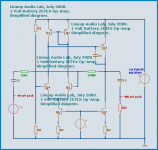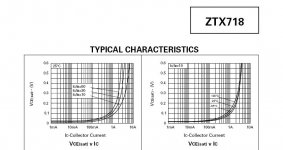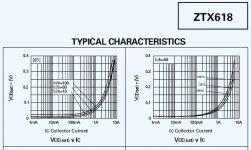Lineup 1 Volt ZETEX Op-Amp
As mentioned, next step is to try a few transistor variants from ZETEX.
It is possible I will be able to squeeze down distortion a bit more.
Right now I am getting THD levels like 0.02 - 0.03 %
At some higher voltage outputs.
To me, this is not optimal.
I want the simulated circuit to show below 0.01 %
This way a real circuit will possibly perform below 0.05 % at all levels.
THD 0.05 % is one criteria Hugh 'AKSA' Dean has mentioned.
Like me, his reasoning is probably,
that such low levels of distortion, is below what human can hear.
At least, HEARING such low distortion
has NEVER in HISTORY yet
been verified in controlled BLIND Tests
-------------------------
Besides, most High-End SPEAKERS shows 0.5 - 1.0 % THD at 1 Watt RMS level.
This is the -40 dB to -50 dB level.
-------------------------
Here is simplified op-amp circuit I use.
All very standard and basic.
Of course my real circuit details & tricks are kept very secret.
So do not try this at home
Lineup
As mentioned, next step is to try a few transistor variants from ZETEX.
It is possible I will be able to squeeze down distortion a bit more.
Right now I am getting THD levels like 0.02 - 0.03 %
At some higher voltage outputs.
To me, this is not optimal.
I want the simulated circuit to show below 0.01 %
This way a real circuit will possibly perform below 0.05 % at all levels.
THD 0.05 % is one criteria Hugh 'AKSA' Dean has mentioned.
Like me, his reasoning is probably,
that such low levels of distortion, is below what human can hear.
At least, HEARING such low distortion
has NEVER in HISTORY yet
been verified in controlled BLIND Tests
-------------------------
Besides, most High-End SPEAKERS shows 0.5 - 1.0 % THD at 1 Watt RMS level.
This is the -40 dB to -50 dB level.
-------------------------
Here is simplified op-amp circuit I use.
All very standard and basic.
Of course my real circuit details & tricks are kept very secret.
So do not try this at home
Lineup
Attachments
darkfenriz said:Why?
Because it needs over 3*VBEon supply to bias. Top down: VBEq1/q2+VBEq4/q5+VBEq6. At 1V supply, not a chance in h*ll, unless it's built with Ge trannies (which I would not even think building a high gain opamp with).
Small signal transistors work quite hapily at around 0.2V Vce.
May I ask how this should work? You get in this case a negative Collector-basis voltage...
Have fun, Hannes
Re: Lineup 1 Volt ZETEX Op-Amp
Hello partners!

As I already told you:
I posted only the SIMPLIFIED circuit.
If you are of the clever sort, like darkfenriz you may figure it out:
you may figure it out:
Originally posted by darkfenriz
Small signal transistors work quite hapily at around 0.2V Vce.
Ther fact is that, like also stated well in this topic,
I use ZETEX Low VBE & Very low saturation transistors.
I have even posted links to those devices.
thanks, AndrewT, for pointing me to these nice ZETEX transistors
http://www.zetex.com/
I know ordinary small singnals works at 0.050 Volt, at very low currents.
And works quite well at 0.100 Volt,
considering those currents I have mentioned in my fists post: 200 - 700 uA
ZETEX ZTX689B & ZTX718
Now, when using these special LOW SAT transitors, with very low VBE, too,
it is no problem to get 1.0 Volt to be well enough to run a circuit
like the schematic I have posted.
Of course, not without some small additional tricks and smartness
-----------------------------------------------
Originally posted by lineup
Here is simplified op-amp circuit I use.
All very standard and basic.
Of course my real circuit details & tricks are kept very secret.
So do not try this at home
Lineup
-----------------------------------------------
sawreyrw said:lineup,
The circuit you just posted will not work. Sorry.
darkfenriz said:Why?
h_a said:Lineup, you're sure that this one will work outside the simulator?
There are 3 junctions in the LTP with current mirror and that already exceeds 1V?
Am I missing something? Have fun, Hannes
darkfenriz said:Small signal transistors work quite hapily at around 0.2V Vce.
h_a said:May I ask how this should work? You get in this case a negative Collector-basis voltage...
Have fun, Hannes
Hello partners!
As I already told you:
I posted only the SIMPLIFIED circuit.
If you are of the clever sort, like darkfenriz
Originally posted by darkfenriz
Small signal transistors work quite hapily at around 0.2V Vce.
Ther fact is that, like also stated well in this topic,
I use ZETEX Low VBE & Very low saturation transistors.
I have even posted links to those devices.
thanks, AndrewT, for pointing me to these nice ZETEX transistors
http://www.zetex.com/
I know ordinary small singnals works at 0.050 Volt, at very low currents.
And works quite well at 0.100 Volt,
considering those currents I have mentioned in my fists post: 200 - 700 uA
ZETEX ZTX689B & ZTX718
Now, when using these special LOW SAT transitors, with very low VBE, too,
it is no problem to get 1.0 Volt to be well enough to run a circuit
like the schematic I have posted.
Of course, not without some small additional tricks and smartness
-----------------------------------------------
Originally posted by lineup
Here is simplified op-amp circuit I use.
All very standard and basic.
Of course my real circuit details & tricks are kept very secret.
So do not try this at home
Lineup
-----------------------------------------------
I can mention a couple of figures.
first:
I do not use the freeware simulators LTspice and Eagle very much.
I use 2 different Professional Simulation softwares.
Standard Pro versions of these will cost you like €500 - €1000.
I use one called Power Pro which is a bit above standard version.
The lowest VBE I have tested in these high cost Spice programs
is 0.473 Volt for one ZETEX transistor.
( If this is not a good BJT spice sim value,
I go kill those advertising expensive but useless software
 )
)
Now, that one (vbe=0.473V) had too low gain, hFE, to be a good performer in Op-Amp.
I use only 2 stages, and need all gain I can get.
The devices I use now, have a VBE drop like 0.495- 0.505 Volt.
I would guess the final bottom limit for the topology in my posted schematic
is like at 0.75 - 0.80 Volt Supply ... ( +- 0.40 VDC )
0.500V ( top current mirror, VBE )
0.150V ( input pair, C-E )
0.150V ( constant current source, C-E )
--------------------------------------------------
0.800V
Lineup regards
first:
I do not use the freeware simulators LTspice and Eagle very much.
I use 2 different Professional Simulation softwares.
Standard Pro versions of these will cost you like €500 - €1000.
I use one called Power Pro which is a bit above standard version.
The lowest VBE I have tested in these high cost Spice programs
is 0.473 Volt for one ZETEX transistor.
( If this is not a good BJT spice sim value,
I go kill those advertising expensive but useless software
Now, that one (vbe=0.473V) had too low gain, hFE, to be a good performer in Op-Amp.
I use only 2 stages, and need all gain I can get.
The devices I use now, have a VBE drop like 0.495- 0.505 Volt.
I would guess the final bottom limit for the topology in my posted schematic
is like at 0.75 - 0.80 Volt Supply ... ( +- 0.40 VDC )
0.500V ( top current mirror, VBE )
0.150V ( input pair, C-E )
0.150V ( constant current source, C-E )
--------------------------------------------------
0.800V
Lineup regards
h_a said:
May I ask how this should work? You get in this case a negative Collector-basis voltage...
Have fun, Hannes
Exactly
Attachments
Low Saturation Voltages from ZETEX
Hehe,
darkfenriz
you beat me to it
I was just going to post this, when I did see your post.
---------------------------------------------------
For example ZTX618 has got the following saturation voltages characteristics
See Attachment.
If I can accept a gain of 100
I can pass ~50-100 mA at 0.025 Volt C-E ( 25 mV )
If I can accept a gain of 50
I can pass 1000 mA (1A) at ~0.075-0.080 Volt C-E ( 80 mV )
Hehe,
darkfenriz
you beat me to it
I was just going to post this, when I did see your post.
---------------------------------------------------
For example ZTX618 has got the following saturation voltages characteristics
See Attachment.
If I can accept a gain of 100
I can pass ~50-100 mA at 0.025 Volt C-E ( 25 mV )
If I can accept a gain of 50
I can pass 1000 mA (1A) at ~0.075-0.080 Volt C-E ( 80 mV )
Attachments
The main concern of Syn08 and me was the 3 junctions that each needs VBE to turn the transistor on. How did you solve that?
C'mon Liney, post your secrets. Designing non-working circuits I can do myself. Give this thread a sense (posting non-working circuits isn't).
Have fun, Hannes
C'mon Liney, post your secrets. Designing non-working circuits I can do myself. Give this thread a sense (posting non-working circuits isn't).
Have fun, Hannes
Re: Low Saturation Voltages from ZETEX
what about using two 1.5V batteries and trying to design for a minimum (near exhausted) supply of ~2Vdc?
but at what Vbesat?lineup said:If I can accept a gain of 50
I can pass 1000 mA (1A) at ~0.075-0.080 Volt C-E ( 80 mV )
what about using two 1.5V batteries and trying to design for a minimum (near exhausted) supply of ~2Vdc?
as Hannes said:
in other word, how the p-n and n-p junctions work inside this transistor?
h_a said:
May I ask how this should work? You get in this case a negative Collector-basis voltage...
Have fun, Hannes
in other word, how the p-n and n-p junctions work inside this transistor?
if Vbe=600mV and Vce=600mV then the voltage at the base equals the voltage at the collector.
In most of our circuits Vce>>Vbe and that leads to the more usual case of The voltage at the base << the voltage at the collector.
But, we have the special case of Vbe>Vce and in the extreme case we approach saturation. For all these the voltage at the base is higher than the voltage at the collector. Nothing mysterious.
The downsides are that we must inject an ever higher base current to get the Vce down to these lower levels and that the base must be driven from a supply that has higher voltage than on the collector. Some form of bootstrapping may help with this.
Will Lineup tell how he makes his circuit work?
In most of our circuits Vce>>Vbe and that leads to the more usual case of The voltage at the base << the voltage at the collector.
But, we have the special case of Vbe>Vce and in the extreme case we approach saturation. For all these the voltage at the base is higher than the voltage at the collector. Nothing mysterious.
The downsides are that we must inject an ever higher base current to get the Vce down to these lower levels and that the base must be driven from a supply that has higher voltage than on the collector. Some form of bootstrapping may help with this.
Will Lineup tell how he makes his circuit work?
Well, I was more thinking along the physical junctions and was wondering what happens in this case physically, as I thought the bjt would behave more like 2 diodes in parallel. I need to take a bit time and think about it.
I might be wrong, but I have a feeling that tells me that this question will remain unanswered
Have fun, Hannes
Will Lineup tell how he makes his circuit work?
I might be wrong, but I have a feeling that tells me that this question will remain unanswered
Have fun, Hannes
- Status
- This old topic is closed. If you want to reopen this topic, contact a moderator using the "Report Post" button.
- Home
- Amplifiers
- Solid State
- Vbe Lowest? In lownoise bipolar transistors





